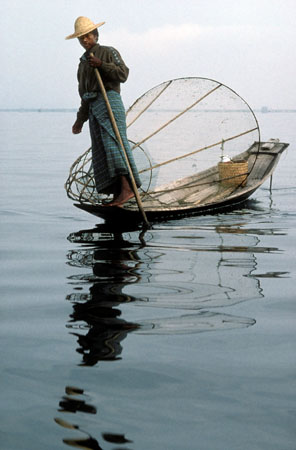Craftsmanship is perhaps at its most prolific in Asia where people can be seen hand-painting pottery, making exquisite jewellery, polishing precious stones and doing extraordinary inlay work with all sorts of materials. Cloisonné, damascene, yoseki, batik and countless other crafts are all easy to find and photograph.
 When people are working they are often at their most confident. They are proud of their workmanship and keen to demonstrate their skills. A photographer who shows a genuine interest in the work, and who approaches the subject in a courteous and sensitive manner, will therefore usually be welcomed. Take care not to cause an obstruction, and don’t expect to be given too much time or attention. Your subjects are earning their living and will want to get on with their tasks.
When people are working they are often at their most confident. They are proud of their workmanship and keen to demonstrate their skills. A photographer who shows a genuine interest in the work, and who approaches the subject in a courteous and sensitive manner, will therefore usually be welcomed. Take care not to cause an obstruction, and don’t expect to be given too much time or attention. Your subjects are earning their living and will want to get on with their tasks.
Key ingredients in images of this type are the immediate activities of the subjects, and the circumstances in which they take place. The pursuit itself is only part of the story and may mean very little if seen in isolation. Well-composed images inform the viewer about what the subjects are doing, and include details such as equipment and dress requirements. However, don’t lose sight of what participation involves at a human level, the type of people involved, and so on. Consider using a wide-angle lens and look for views that show the broad picture.
The use of flash, preferably bounced from a ceiling or wall, may be essential in poor light. However, the atmosphere of the working environment may be destroyed by too much light so look for ways of using existing light sources. This will be controlled or designed to be suitable for the working environment and consequently provides the most appropriate atmosphere if used to best advantage.






